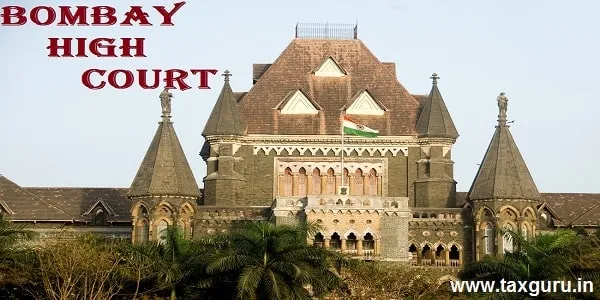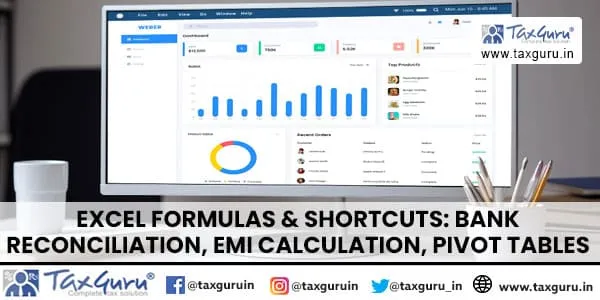HIGH COURT OF DELHI
Subodh Kumar Bhargava v CIT
ITA No. 243/2008
November 26, 2008
RELEVANT EXTRACTS:
9. Section 275(1)(c) reads as under:-
“275. Bar of limitation for imposing penalties. (1) No order imposing a penalty under this Chapter shall be passed”
xxx xxx xxx xxx ;
xxx xxx xxx xxx ;
In any other case, after the expiry of the financial year in which the proceedings, in the course of which “action for the imposition of penalty has been initiated, are completed, or six months from the end of the month in which action for imposition of penalty is initiated, whichever period expires later”.
xxx xxx xxx xxx ;
10. Section 275 falls within Chapter XXI which deals with “Penalties Imposable”. Sub-clauses (a) and (b) of Section 275(1), which have not been extracted above and are not attracted in the present case, relate to cases where the assessment to which the proceedings for imposition of penalty relate are the subject matter of an appeal before higher authorities or are the subject matter of a revision under Section 263 of the said Act, respectively. Sub-clause (c) of Section 275(1) covers all other cases not falling within sub-clauses (a) or (b). In this sense, Section 275(1)(c) is a residuary provision. In the present case, sub-clauses (a) and (b) are not at all attracted and, therefore, the case squarely falls within sub-clause (c). It is also necessary to point out that in respect of each of the sub-clauses (a) to (c), specific periods of limitation have been prescribed. Thus, in the first instance, it is to be seen as to under which sub-clause the case falls and then to apply the period of limitation prescribed in respect of that sub-clause. The present case falls under Section 275(1)(c) and, therefore, the period of limitation prescribed in sub-clause (c) would apply and no other.
11. Section 275(1)(c) is a residuary clause and, therefore, is supposed to cover all cases not falling under sub-clauses (a) or (b) of Section 275(1). Since the present case falls under this residuary sub-clause (c), we need to examine the period of limitation prescribed in respect thereof. As noted earlier in this judgment, there are two periods of limitation prescribed under sub-clause (c), the first period relates to those category of cases where action for the imposition of penalty has been initiated in the course of “some” proceedings. In such a situation, the period of limitation prescribed is upto the end and including the financial year in which such proceedings are completed.
12. The second part of Section 275(1)(c) pertains to all cases falling under clause (c). This is so because the action for imposition of penalty is contemplated in both parts. Penalty can only be imposed under Chapter XXI by following the procedure prescribed in Section 274 of the said Act which stipulates that no order imposing a penalty can be made unless the assessee has been heard or has been given a reasonable opportunity of being heard. Thus, in any eventuality, before an order imposing a penalty can be passed, the assessee has to be heard or has to be given a reasonable opportunity of being heard. This can only happen when action for imposition of penalty is initiated and the assessee is put to notice with regard to such action so that he may present his point of view in opposition to such action. The only difference between the first part and the second part is that while in the first part, the action for imposition of penalty is initiated in the course of some other proceedings, under the second part, “the other” proceedings are of no relevance and the only thing to be considered is the point of time as to when the action for impositionof penalty is initiated.
13. There may be cases which fall under Section 275(1)(c) in which action for the imposition of penalty is initiated in the course of some other proceedings. There may also be cases under Section 275(1)(c) in which the action for imposition of penalty is initiated, but not in the course of some proceedings. In the former category of cases, both the periods of limitation may be applicable, whereas in the latter category, only the second period of limitation of six months from the end of the month in which action for imposition of penalty is initiated, would apply. To illustrate this, let us take the first category of cases. This is that category where the action for imposition of penalty is initiated in the course of some other proceeding. In such a situation, it is obvious that both the periods of limitation would come into play. One would be reckoned from the date on which the other proceedings are completed upto and including the end of the financial year in which that date occurs. The other period of limitation would be that which applies irrespective of the date of completion of the “other proceedings” and which is relatable simply to the date on which action for imposition of penalty is initiated. The period of limitation in such a case would be six months from the end of the month in which the action for imposition of penalty is initiated. It is clear that where penalty proceedings are initiated in the course of some other proceedings, the legislature has provided for two different periods of limitation. However, so that there is no confusion with regard to which of the two would apply, the legislature has added the expression “whichever period expires later” at the end. To explain this, let us take two examples:
Example 1:
Assume that the action for imposition of penalty is initiated on 5.03.2007 in the course of some proceedings which are completed on 25.03.2007. On the basis of the first part of Section 275(1)(c), the period of limitation would end on 31.03.2007 being the end of the financial year in which the proceedings in the course of which action for the imposition of penalty was initiated, is completed. However, taking recourse to the provisions of the second part of Section 275(1)(c), the end point of the period of limitation would be 30.09.2007. This would be so because the action for imposition of penalty was initiated on 15.03.2007, implying thereby that the end of the month would be on 31.03.2007. The period of six months from such date would end on 30.09.2007. Thus, in this example, we are faced with two dates on which limitation would end. But, because of the expression “whichever period expires later”, the period of limitation would have to be taken as 30.09.2007 which is relatable to the date on which action for imposition of penalty was initiated and not to the date on which the proceedings, in the course of which such action was initiated, are completed.
Example 2:
Let us assume that action for imposition of penalty is initiated on 15.04.2007 in the course of proceedings which are completed on 25.05.2007. Under the first part of Section 275(1)(c), the period of limitation for passing an order imposing penalty would end on 31.03.2008 being the end of the financial year in which the proceedings, in the course of which action for imposition of the penalty had been initiated, are completed. However, in terms of the second part of Section 275(1)(c), the period of limitation would end on 31.10.2007. This is because, the period of six months would have to be reckoned from the end of the month in which action for imposition of penalty was initiated. Action for penalty in this example was initiated on 15.04.2007. The end of the month could be 30.04.2007. Consequently, the period of six months from this date would end on 31.10.2007. Thus, in this example, we are once again faced with two periods of limitation: the period ending on 31.03.2008 being the end of the financial year relatable to 25.05.2007, the date on which the proceedings were completed and 31.10.2007 being the date relatable to the initiation of the penalty proceedings. Once again, applying the expression “whichever period expires later”, the period of limitation for this example would be 31.03.2008.
14. The above two examples illustrate cases where the applicable period of limitation would be relatable either to the date of initiation of the penalty proceedings or to the date of completion of the proceedings in the course of which action for the imposition of penalty has been initiated. But there is a third / residuary category of cases where the initiation of action for imposition of penalty is not in the course of some proceedings. In such cases, the first part of Section 275(1)(c) would have no application and it is only the period of limitation prescribed in the second part which would apply. Since only one period of limitation would be applicable, the expression “whichever period expires later” would have to be read as that very period of limitation. The present case undoubtedly falls under Section 275(1)(c) and, that too, under the second part thereof. Therefore, on a plain reading and on a logical analysis of the relevant provisions of the said Act, the period of limitation during which an order imposing a penalty could have been passed in the present case would be a period of six months beginning from the end of the month in which the action for imposition of penalty was initiated. We have already noticed above that the show cause notice under Section 274 read with Section 271B of the said Act was issued on 31.07.2003. Since that happened to be the end of the month also, the period of six months would have to be reckoned from that date. That would take us to 31.01.2004 Thus, the penalty order could have been passed on any date upto and including 31.01.2004 The penalty order came to be passed on 17.02.2004, which would be hit by the bar of limitation.




















